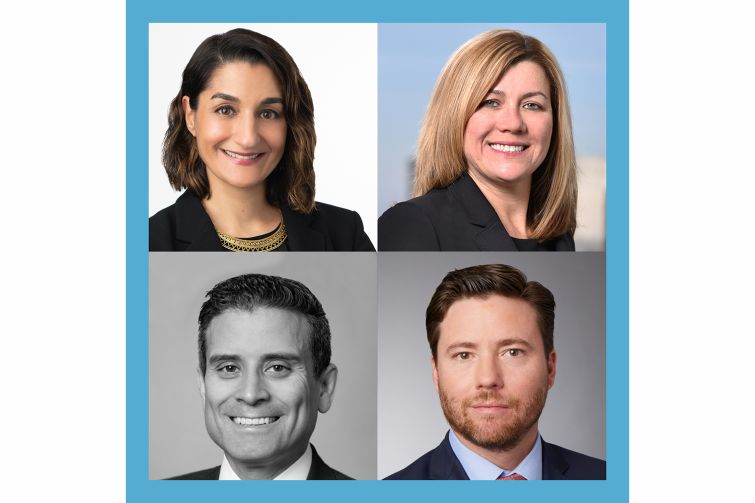Lenders Position Themselves for Eventual Market Rebound on the Horizon
Lending officials from PGIM Real Estate, CIT Group and Nuveen Real Estate discussed new opportunities at CO's 4th Annual Spring Financing CRE Forum
By Mack Burke April 24, 2020 2:00 pm
reprints
The commercial real estate mortgage market had a robust 2019, and before the novel coronavirus outbreak stopped the economy in its tracks, most every lender was poised to benefit from what was expected to be an even better 2020.
While the U.S. economy — and most of the rest of the world — remains in a state of limbo due to COVID-19 social distancing measures and mandated business closures, commercial mortgages are still being originated, albeit at a more languid pace as most lenders have quickly taken a much more defensive posture. Instead, because most CRE observers expect a relatively strong, but gradual, rebound from this downturn, many lenders are trying to look for ways to position themselves to come out of the gates of this crisis one or two years from now at a feverish pace.
“[I’d say we’re] 75 percent defense and 25 offense,” said Jason Hernandez, a managing director and the head of real estate debt originations for the Americas at Nuveen Real Estate, which has just over $130 billion in assets under management across the globe. “Retail and hospitality [have been] the two largest sources of distress. On the hospitality side, we [don’t have a] ton of exposure, but what we do have is select service and extended stay assets. There’s no senior financing in the debt fund space [right now]. [We’re] looking at unlevered whole loans … with optionality to finance when the market comes back. We’re trying to think one or two years out … trying to be strategic to see what we don’t have in our portfolio that we need to put us in a better spot down the line. There’s more time to do that now.”
Hernandez’s comments came as part of a three-person panel discussion titled “Game of Loans: Lenders of all stripes take a gamble in a shifting market,” which was the third and final virtual discussion that made up Commercial Observer’s 4th Annual Spring Financing Commercial Real Estate Forum yesterday. Joining Hernandez on the panel was PGIM Real Estate managing director Melissa Farrell and CIT Group’s head of real estate finance, Christopher Niederpruem. It was moderated by Seyfarth Shaw partner Megan Vallerie.
Prior to COVID-19 tightening its grip on the U.S. in mid-March, Farrell said PGIM was aggressively seeking new business, a nod to the robust market that was alive just a few weeks ago — what feels like another lifetime.
“In the first week of March, we were vying for business and trying to hold onto 3 percent coupon floors,” Farrell said. ‘We watched the market decline and we were getting pulled down with everybody. We are in discovery mode [right now]. We’re focused [on things like] market intelligence and price discovery while spending a lot of time talking to people.”
Going forward, lenders are expecting the summer months to be especially tough as the walls continue to close in around many borrowers. Still, while the capital markets continue to deal with a pricing evolution, most lenders have already discovered where they want to be, and their pipelines and recent activity reflect that.
“There is pricing transparency. We all have an idea where the market is, but we just don’t like where it is,” Hernandez said. “Banks are not that active and are focused on SBA lending. On the life company side, they are quoting with a bit of volatility. [Pre-COVID-19 it was at] 4 to 4.5 percent and now it’s down to 3.5 to 4 percent; borrowers were having a hard time when rates were sub-3 just a few weeks ago. On the levered lenders side, mortgage REITs are not active, and for debt funds, the senior financing market is opaque and non existent. At an unlevered basis, coupons are 300 to 500 points over. Everything we’re looking at has just a handful of bids and borrowers aren’t transacting unless they have to. We are active and quoting across the life company and debt fund space, but we’re not seeing a lot of takers.”
Niederpruem agreed with Hernandez about the limited pool of borrowers currently out there and their lack of enthusiasm for the new norms established for rates and coupon floors, adding that “debt markets are open selectively, but there’s not a lot of demand. Investment sales activity has fallen off a cliff. The agency side is still active. Five weeks ago I’d say price discovery was still there. Lenders have discovered where they feel comfortable, but I don’t think the equity likes it or has digested that yet. Hospitality is a no bid market. We’re selectively in the market, but banks are inordinately focused on portfolio and CARES Act lending.”
“The acquisition market is at a standstill, but we’re looking at a lot of refinances,” Farrell said. “Our focus has turned mainly to industrial and multifamily, and we have been looking for more stretch core opportunities to get add spread, so we’re moving back to safety.”
Farrell added that her group rate locked two deals recently — one this week and one last week. She said one of those deals was a loan with very low leverage to a “borrower just looking to gain some liquidity… it was a relationship loan for us to help a good borrower.”
While these three lenders are looking ahead for strategic chances where they can find them, their forward pipelines have of course diminished for a variety of reasons, with each one saying that their respective pipelines are anywhere from 10 to 20 percent of what they were before COVID-19.
“Most of our business is acquisitions and some development,” Niederpruem said. “Our pipeline is probably 20 percent of what it was, and I don’t know if I even like the 20 percent that’s there.”


